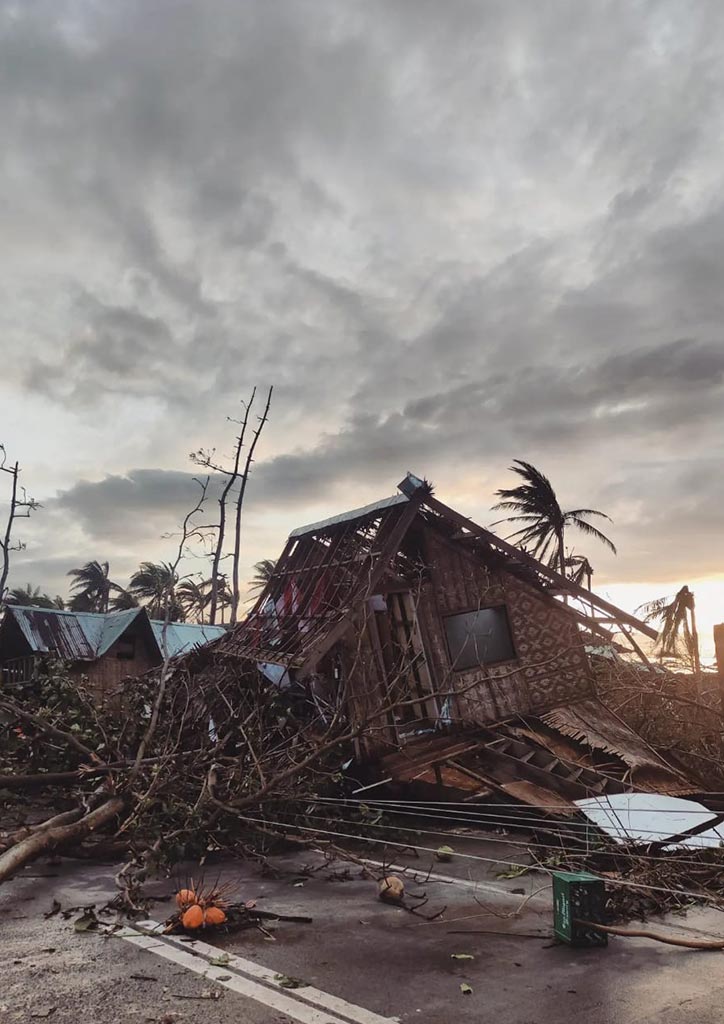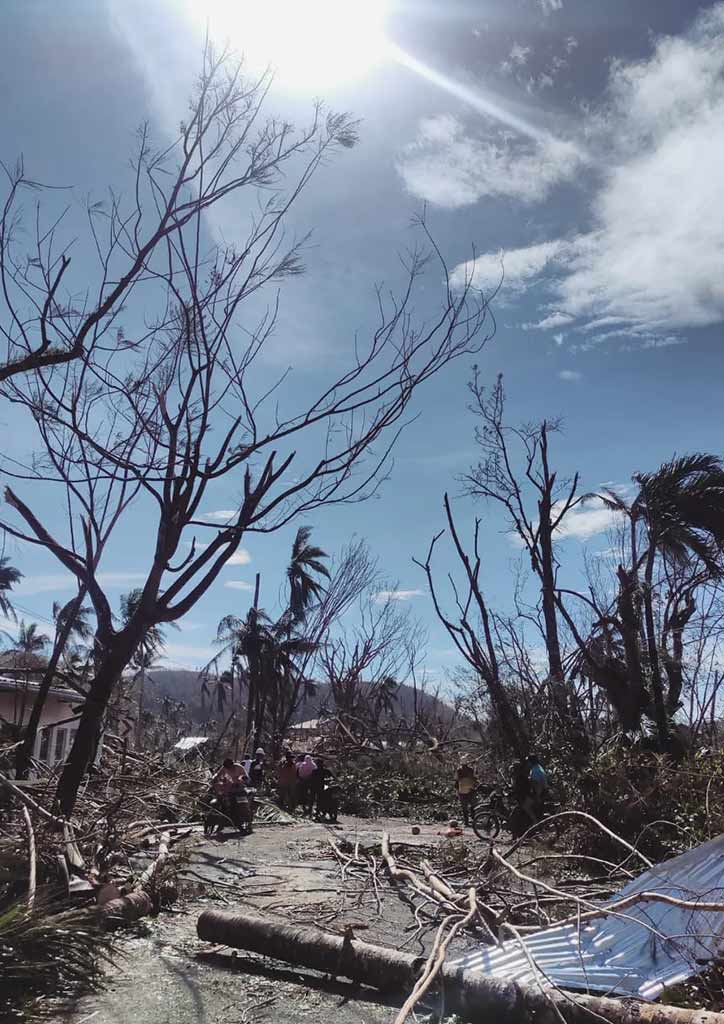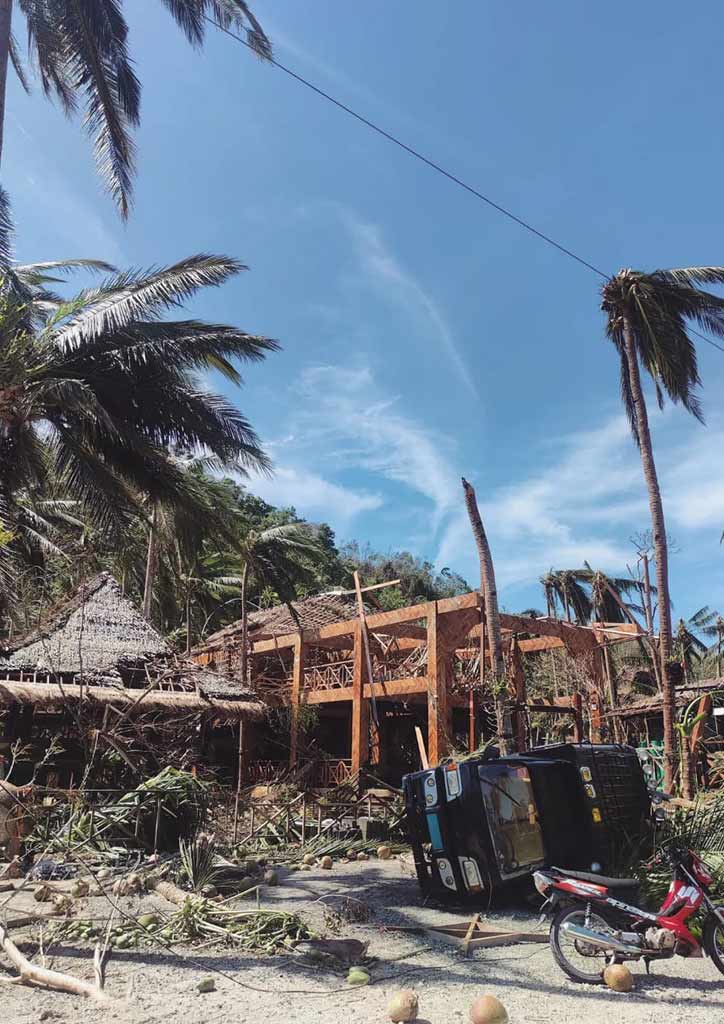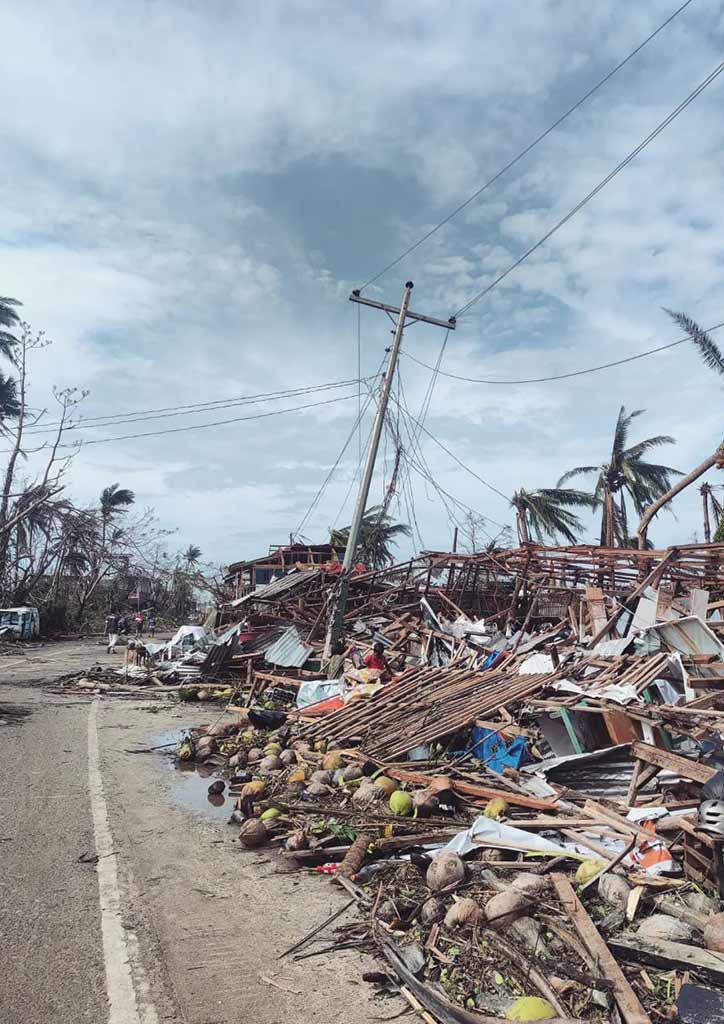The island, which has become a refuge for many in the middle of the pandemic, was one of the hardest hit of one of the most catastrophic storms to hit the country in years.
Last week, Chun-chi Soler shared a video of how Siargao was hit by Odette, the catastrophic tropical cyclone that left many in the Visayas lacking food, water, and electricity.
The first category 5 super typhoon to hit the country in five years flattened many municipalities. Siargao, the tear-shaped island southeast of Tacloban, was not spared. Communication and basic commodities were hard to come by following Odette’s December 16 landfall, and at least 19 people passed away.

“This was just the beginning,” says Soler of the scene he captured in the video, which shows the wind and rain picking at Munimuni Villas, which he and artist Carlo Tanseco opened just this year. “Little did we know how much stronger it would become.”
Soler continues that the wind got 10 times worse and would come at them from different directions, from the front facing the sea to the sides.
“Plywood we used to board up the facade facing the ocean flew apart,” he continues. “We had expected a storm surge and were ready to go to the third floor, but we were lucky that it did not happen in our area in Catangnan… and the third floor did not offer protection from the strength of the wind.”

Odette, whose international call sign was Rai, had maximum sustained winds of 195 kilometers per hour near the center and gusts of up to 240 KPH.
“We had to open all sliding doors while we fought to keep them in place as they were flying off their hinges,” says Soler in his post. “Then the water carried by the wind came inside from the roof, from the sides, from everywhere. We locked ourselves up in the second floor bathroom which proved to be the safest place.”
He says that they “were lucky—others were not so lucky. We were lucky, luckier than most.”

In the days after the catastrophe, images from the provinces hit were shared on social media and through news articles. The photos coming out of Siargao showed houses torn apart, streets lined with fallen trees, and debris as far as the eye could see.
Help has started coming to the island, with relief starting to trickle in as both communications and transportation to the island are still challenged. Of course, the people of Siargao who are able have been hard at work.
The kind hearted community in Siargao, Soler says, started to clear the debris the next day “to make the roads passable and rebuild their homes with sadness in their faces but still with smiles in their hearts.”

He and his friends have always started a fund drive to purchase food, water, building materials, tarps, solar lights, fuel, and other necessities for the community around Munimuni.
“Munimuni is still standing but we need to rebuild,” Soler says. W”e need to rebuild Siargao. We will because of its community and what it represents.”
Photos by CHUN-CHI SOLER and @JBDAVAL





